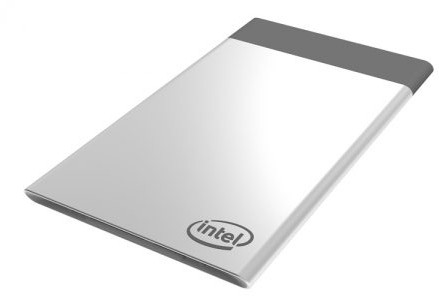Intel has just introduced their Compute Card, the name likely originating from their Compute Stick & Module series, integrating all main components you’d find in a computer such as a processor, memory, storage, and wireless connectivity into an standardized ultra thin business card sized module that can be used in compatible devices from smart kiosks to security cameras and IoT gateways, as well as computers and laptops.
 Intel has some demos at CES 2017, but has not announced any specific models yet. We still have some of the key features for the Compute Cards:
Intel has some demos at CES 2017, but has not announced any specific models yet. We still have some of the key features for the Compute Cards:
- Processor up to 7th Gen Intel Core, memory, storage and wireless connectivity are all included in the card
- Intel Compute Card-based device will provide the power, cooling and the optimized user I/O for that particularly solution
- Connection to devices will be done via an Intel Compute Card slot with a new standard connector (USB-C plus extension)
- USB-C plus extension connector will provide USB, PCIe, HDMI, DP and additional signals between the card and the device
- Dimensions – 94.5 mm x 55 mm x 5 mm
It’s not the first time company have created compute module for upgradeability and modularity, as with, for example, EOMA68 CPU card going into a mini computer and laptop, just like BBC demo of Intel Compute Card below featuring Core-M processor.
Intel is now working with early partners such as Dell, HP, Lenovo, Sharp, and InFocus to develop products taking Compute Card. More details, including pricing, will be made available in Q2 2017 just before the Compute Card and compatible devices should start to hit the shelves around the middle of the year. You’ll find a few more details on Intel’s Compute Card product page and press release.

Jean-Luc started CNX Software in 2010 as a part-time endeavor, before quitting his job as a software engineering manager, and starting to write daily news, and reviews full time later in 2011.
Support CNX Software! Donate via cryptocurrencies, become a Patron on Patreon, or purchase goods on Amazon or Aliexpress




